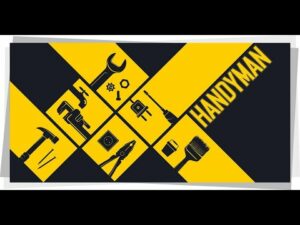
Paul&Shark’s website went live in 2019, but the Italian luxury clothing brand has been around for half a century. “The brand has a long history,” said Giusseppe Miriello, Paul&Shark’s Global Digital Director.
Miriello’s role is focused on growing the digital department which includes e-commerce and will soon include B2C apps and marketplaces.The brand’s inspiration was based on a trip the founder, Paola (Paul) Dini, took to Maine. Dini visited a sailmaker’s shop and saw the name “Paul&Shark” inscribed on a sail from an 18th century ship.

Said Miriello, “He saw this as a sign of destiny and he decided that this would be the name of the brand. From the beginning, we’ve been working with sustainable materials. Our garments are notorious for being able to withstand windy and wet conditions. Over time, we extended selling our products worldwide and recently to e-commerce.”
As was the case with many retailers, Paul&Shark experienced incredible online growth in 2021 which strained their e-commerce team. A significant pain point was the website’s search function, which was the out-of-the-box tool that came with Magento, their e-commerce platform. Magento was slow at processing the data from their catalog, leading to a poor overall website search experience.
Miriello wanted a website search tool with more flexibility around visual merchandising and the ability to create relevant, timely search results for each shopper.
Better search & discovery equals improved customer experience
Miriello understood that Paul&Shark needed to fix the website’s search experience. He’d worked with Algolia, an API search and discovery platform, at previous companies.
Algolia was built specifically for people who own their content. It speeds up website search results out of the box and is also highly customizable. Its visual merchandising feature allows website owners to better control how the search results appear and the order that they appear in.
Visual merchandising is an approach that retailers use to maximize customer satisfaction. In physical stores, this includes optimizing store layout, such as displaying products at eye-level or placing signs for easy scanning by shoppers while they’re browsing. This helps motivate people to purchase more and stay longer.
“Algolia allows the brand or site owner to use visual merchandising to better control how search results appear and the order that they end up in,” explained Piyush Patel, Algolia’s Chief Strategic Business Development Officer. “It uses business rules like inventory, availability, location geotargeting, and other variables to better target the outcomes that consumers expect. It also uses data like previous purchase history, brand affinity, and product type.”
Searchandising: A modern approach to visual merchandising
“Searchandising” is the process of improving website search functionality to help visitors find what they’re looking for. In e-commerce, website search is crucial to the buying experience for online shoppers. Fully 94% of U.S. consumers quit a shopping session due to poor product search results, according to a recent Harris Poll conducted by Google.
A good e-commerce search experience includes delivering results quickly, providing customized product listings, and surfacing relevant product recommendations depending on season, region and other factors.
Paul&Shark has about 25,000 CPUs and they’re located in 108 countries, so when the pandemic drove shoppers online, their e-commerce searches increased by a magnitude of 50X in 2021. Their existing website search tool wasn’t robust enough to handle the increase in search volume.
“Magento is very, very slow at processing all the data and it would have been extremely difficult to give an excellent customer experience without a third-party tool that can fetch the data from our catalog and process the search in the appropriate way,” said Miriello.
For example, Miriello wanted to communicate specific styles with specific times of the year. “For that,” he said, “the e-commerce team needed more granular control of relevance and powerful visual merchandising capabilities.”
Alogolia gives nontechnical users the ability to manage the relevance and ordering of the list of product search results via a drag-and-drop interface. Rules are created manually (e.g., if inventory is higher for one item versus another, you can set a rule to have the higher inventory product show up at the top of the results).
Miriello used Algolia, not only to improve search relevance, but also to remove the manual processes previously used to build product listing pages. “I took ownership of the implementation,” he explained. “There was a system integrator who did the work of integrating the code, but I created the algorithms both from the searchandising and visual merchandising aspects of setup.”
A faster path to that cotton shirt
Algolia’s technology leverages AI to get shoppers the results they want quickly. Brands have a lot more control about how to incorporate additional data from past purchases and customer shopping behavior, but shoppers don’t have to be logged in to benefit from this feature. Search results can be purely session-based.
“If I search for organic milk during a session and then search for bananas, it assumes I’m going to want organic bananas,” said Patel. “I’ve shown that I already have a preference. The data makes it easier to deliver relevant results. All of this is aimed at getting the consumer to the outcome they want much quicker without actually having to forge through lots of irrelevant results.”
After implementing Algolia’s search and discovery technology, Paul&Shark experienced upticks across the board:
- Use of the search function increased by 39%.
- Revenue accrued in the first month of implementation increased by more than 15%.
- Conversion rates rose to almost 10%.
In addition to these tangible results, Miriello realized a surprising benefit from the improved search functionality — customers were using search to find information as well as products.
“Well, of course numbers are good,” he said. “And since we are planning for two improvements with integration, of course the numbers will get better in the future, but what really stood out is that our customers use search to find information instead of reaching out to customer care. In the midst of their product queries, they’re searching for things like ‘how can I load up my loyalty points, how can I exchange a product, and how many days does it take for delivery?’”
The information surfaced by the customers’ search queries isn’t necessarily being expressed to customer care. These searches are helping Miriello’s team better identify things that customers want and further streamline search results to score content more appropriately based on customer queries.
Said Miriello, “Any query related to non-commercial items will be driven to FAQs or customer care. This way we hope to improve the customer experience and improve sales with the help of the customer representatives who are experts in product issues.”





